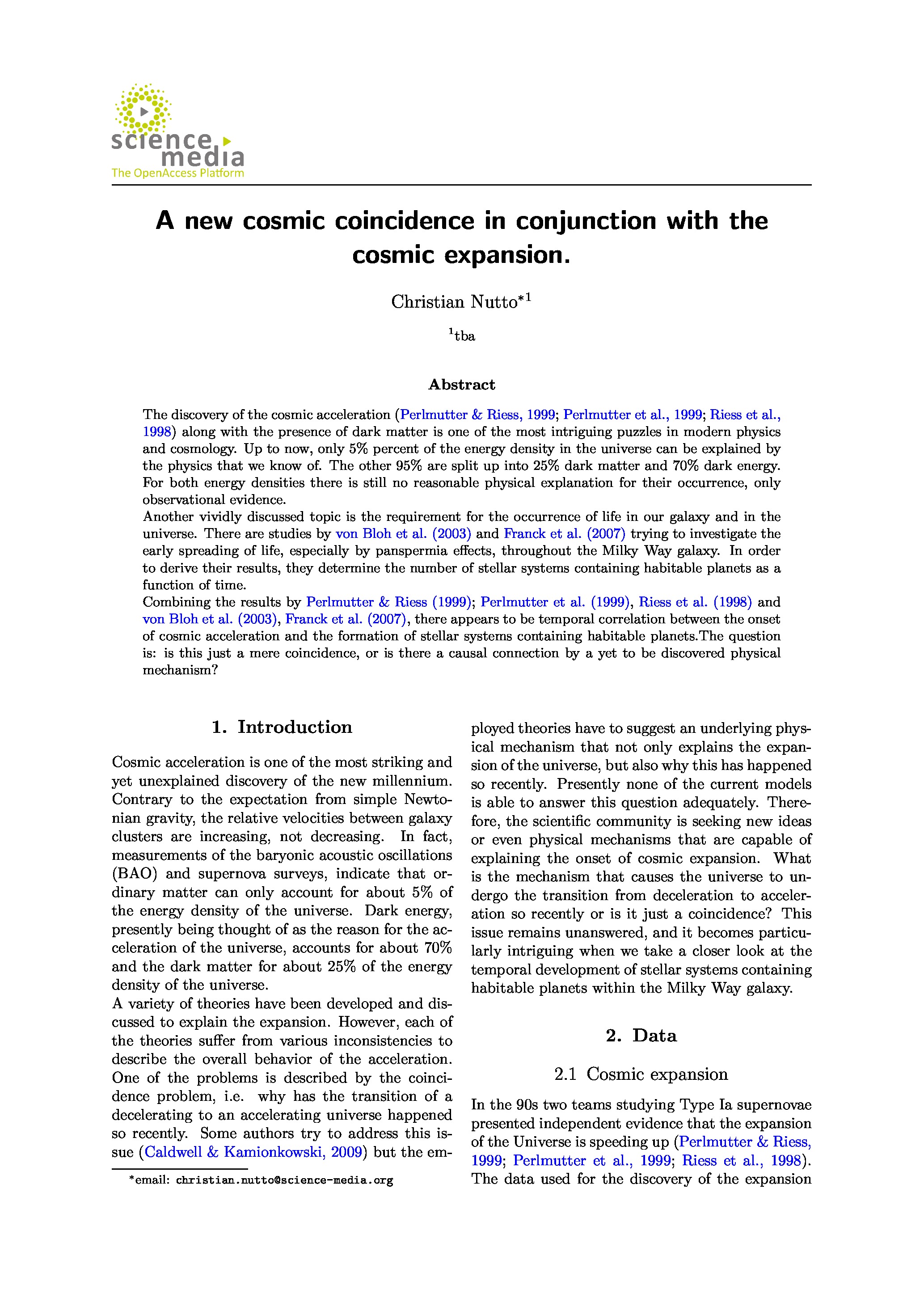A new cosmic coincidence in conjunction with the cosmic expansion.
Main category
Natural Sciences (Astrophysics and Astrononmy)
Abstract
The discovery of the cosmic acceleration (Perlmutter & Riess, 1999; Perlmutter et al., 1999; Riess et al., 1998) along with the presence of dark matter is one of the most intriguing puzzles in modern physics and cosmology. Up to now, only 5% percent of the energy density in the universe can be explained by the physics that we know of. The other 95% are split up into 25% dark matter and 70% dark energy. For both energy densities there is still no reasonable physical explanation for their occurrence, only observational evidence.
Another vividly discussed topic is the requirement for the occurrence of life in our galaxy and in the universe. There are studies by von Bloh et al. (2003) and Franck et al. (2007) trying to investigate the early spreading of life, especially by panspermia effects, throughout the Milky Way galaxy. In order to derive their results, they determine the number of stellar systems containing habitable planets as a function of time.
Combining the results by Perlmutter & Riess (1999); Perlmutter et al. (1999), Riess et al. (1998) and von Bloh et al. (2003), Franck et al. (2007), there appears to be temporal correlation between the onset of cosmic acceleration and the formation of stellar systems containing habitable planets.The question is: is this just a mere coincidence, or is there a causal connection by a yet to be discovered physical mechanism?
Do you have problems viewing the pdf-file? Download paper
here
If the paper contains inappropriate content, please
report the paper. You will be redirected to the landing page.
